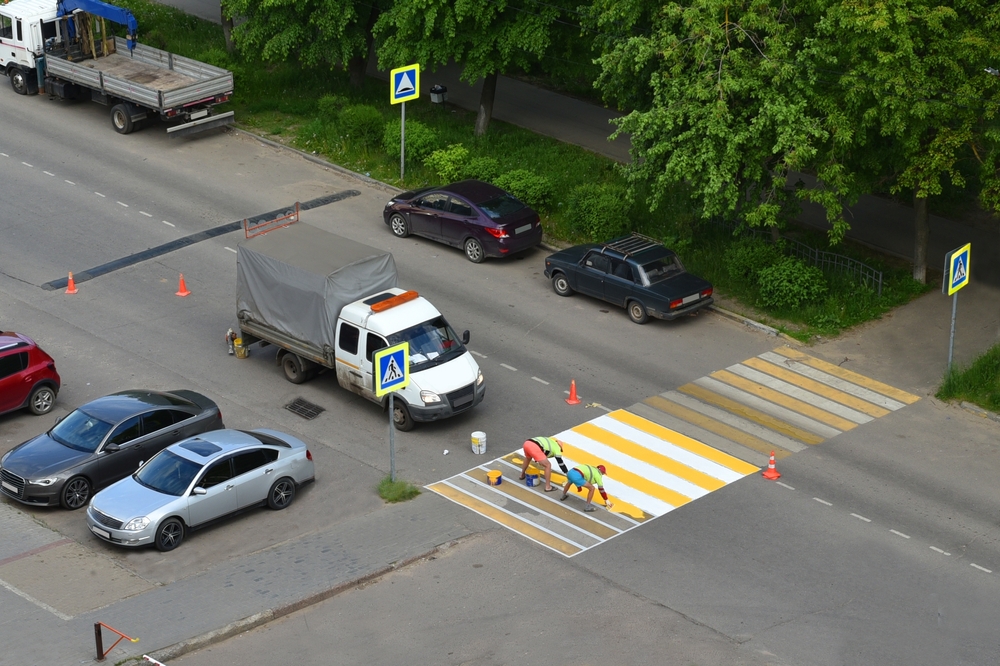
Smart work zones have become increasingly important in the construction industry, as they help to improve safety, reduce congestion, and enhance overall efficiency. However, one critical aspect of smart work zones that is often overlooked is the transition areas. These are the areas where traffic patterns change and drivers must adjust to new road conditions. In this article, we will explore the transition areas in smart work zones and how Worksafe TCI can provide solutions to ensure these areas are safe and efficient.
Understanding Transition Areas in Smart Work Zones
Transition areas in smart work zones are critical for maintaining safety and efficiency during construction activities. These areas represent a shift in traffic patterns, where drivers must adjust to new road conditions. Preventing accidents and reducing traffic congestion can be achieved by properly designing and implementing transition areas. Several common transition areas in smart work zones include taper, merge, and transition zones.
Taper zones are where the work zone begins, and the number of lanes is reduced. This area is usually marked with cones or other traffic control devices to indicate the start of the work zone. On the other hand, merge areas occur where lanes converge, and drivers must merge into a single lane. This area often has temporary signs and pavement markings to indicate the merge point. In transition zones, drivers must shift from one driving pattern to another, such as from a divided highway to a single lane.
The design of transition areas in smart work zones depends on various factors, including speed limits, traffic volume, and road geometry. The goal is to ensure the transition area is as safe and efficient as possible. For example, the length of a taper zone will depend on the speed limit, with longer taper zones required for higher speed limits. Similarly, the design of a merge area will depend on the traffic volume, with longer merge areas needed for higher traffic volumes.
Considering these factors, the design of transition areas can be optimized for maximum safety and efficiency in smart work zones.
Benefits of Using Smart Work Zone Technology in Transition Areas
Smart work zone technology has become increasingly important in the construction industry, as it helps to improve safety and efficiency during construction. Transition areas are critical areas where smart work zone technology can significantly impact. The use of smart work zone technology in transition areas offers several benefits, such as:
- Real-time Traffic Information: Smart work zone technology alerts drivers of potential hazards and lane closures, helping them to adjust to changing road conditions.
- Reduced Congestion: Smart work zone technology can reduce congestion and minimize delays by offering drivers alternate routes, ensuring smooth traffic flow.
- Improved Safety: Smart work zone technology can warn drivers of traffic pattern changes in transition areas, reducing workplace accidents.
- Increased Efficiency: Smart work zone technology helps construction crews optimize efficiency by monitoring traffic and adjusting work schedules, reducing project duration.
- Cost-effective: Smart work zone technology can manage traffic cost-effectively in transition areas, reducing the risk of accidents and delays and lowering construction costs.
Working with a trusted provider like Worksafe Traffic Control Industries can help transition areas use smart work zone technology effectively. Worksafe Traffic Control Industries, a women-owned business, offers high-quality smart work zone solutions, including traffic control devices, signage, and smart work zone technology. In particular, Worksafe Traffic Control Industries’ smart work zone technology can help to provide real-time traffic information, reduce congestion, improve safety, and increase efficiency in transition areas.
Ensuring Safe and Efficient Smart Work Zones with Smart Work Zone Technology
Transition areas in smart work zones are critical for maintaining safety and efficiency during construction activities. Congestion and accidents can be avoided with well-planned and executed transition zones. Additionally, smart work zone technology can provide real-time traffic information, reduce congestion, improve safety, and increase efficiency in transition areas.
When you work with a trusted provider of smart work zone solutions like Worksafe Traffic Control Industries, you can be confident that you will receive reliable, top-notch products and services to keep drivers safe and traffic flowing smoothly. So, don’t wait to implement smart work zone solutions in your transition areas. Contact Worksafe Traffic Control Industries today to learn more about their products and services and to place your order. With their expertise and dedication to high-quality products and services, Worksafe Traffic Control Industries can help you ensure safe and efficient smart work zones in your construction projects.

